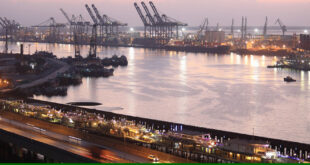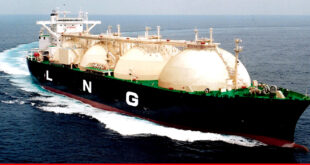The existence of Karachi Port dates back to eighteenth century when Alexander the Great, ended his campaign along the Punjab Rivers and Indus. His Admiral Nearchus, with his fleet, reached Krokala, which is known today as Keamari. Writers like James Rennell (1792) and M. R. Haig (1894) have identified this place in their scripts. Alexander Baillie mentions Arabic Treatise “Mohit” to be used as “Port” for the first time in 1558.
The name of Karachi pertains to the year 1742. According to Seth Naomal, the founding of Karachi as a trading center took place in 1729. The port town of Karachi was then under the administrative control of Khan of Kalat. Due to the strategic importance Mirs of Sindh who were very keen to capture it in 1795, the Sindh Ruler Mir Fateh Ali Khan Talpur (1795-1839) occupied this place while realizing the importance of port and built a fort at Manora in 1797.
It is for the very first time that the trade was carried out in the Talpur period. In the Talpur period, Karachi had a sizeable trade and commerce as Henry Pottinger wrote that the Customs at the port of Karachi yielded Rs99,000 annually.
Charles Mason wrote in 1830 that port had 100 vessels of all kinds. The port of Karachi was totally undeveloped. There were no wharves, no dockyards, no jetties and no other facilities of a modern port.
Harbour situated then on the western side of the island of Keamari between the main land of Karachi and Manora. A channel was known as the Chinna Creek. Another channel, which used to flow from Keamari to Customs House Channel, was shallow, so small boats were used.
Large vessels were unable to enter the harbor because of the rocky/sand bar entrance near Manora. Still in spring tides, vessels of 400 tons, Prince of Wales and other vessels were able to reach harbor safely in 1809. Goods were brought to harbor by small boats (Dundi), bullocks or by coolies.
At the end of 1839, there were 28 boats at the port of Karachi and tonnage range was from 50 to 150 each. Karachi Port served as the principle channel for the sea borne trade of vast hinterland. There was only one competitor port of Sonmiani on the Makran Coast.
After the conquest of Sindh in 1843, the next seventeen years were utilized to make Karachi a commercial cum trade hub. Sir Charles Napier floated the idea of Karachi as a free port. He brought several improvements like widening the entrance of harbor construction of Docks to connect the Keamari with the town of Karachi through mole to build timber pier. He initiated all these developments. The only work was carried out in his time was installation of light house at Manora. 1044 vessels reached Karachi Port. In 1854 the mole connecting the town was completed and was named Napier Mole.
After survey of Harbour, a prominent harbor engineer Mr Walker proposed the construction of Breakwater, Keamari Groyne, Native Jetty and also suggested the stoppage of Chinna Creek as well as construction of Bridge over Napier Mole.
In 1859 to 1860, these proposals were approved and work commenced, which gave initial shape to the port.
In the late British period, due to the Civil War in United States of America, Cotton export affected badly. This caused a boom in export from Karachi Port.
In 1862 till 1865, as the opening of Suez Canal, Karachi Port came nearer to Europe and flourished rapidly. The construction of Keamari was completed in 1863. The East Pier was constructed between April 1864 and November 1865.
The Harbor was protected by the construction of Keamari Groyne in 1863. The construction of Manora Breakwater started in 1870 and completed after 4 years. Merewether Pier was constructed and Erskin and James wharves with three berths each completed respectively in 1888 and 1895.
To carry out the port’s improvement and to increase traffic to handle all this, a separate body was formed and the idea of setting up a Port Trust was initiated but according to the views of the Committee, port cannot be set up until sufficient development work was not done.
The development works were executed by Kurrachee Harbor Works Engineer (KHWE). It was headed by Chief Engineer, KHWE. On 10th March 1880, government appointed Karachi Harbor Board by a notification.
In 1886, the Karachi Port Trust was passed by Bombay Legislative Council and under this Act; KPT was set up in 1887. The Collector Karachi was the Ex-officio Chairman of the Trust. Since then the port administration has embarked on an extensive development of the port on modern lines.
During the First World War, 1914-18, Karachi Port, by virtue of its strategic location, was called upon to play a significant role and by now it was fully equipped to deal with the logistics of moving ammunition, equipment and troops.
The magnificent Head Office building had been started in 1912, in the Renaissance style. By 1915 this beautiful building with its impressive dome, curved exterior and airy loggies and staircases was completed.
It was immediately requisitioned as a Military Hospital and it served as till the end of the world war. This service to humanity by the Karachi Port Trust set a precedent for a tradition of social service by the Organization and over the years many civic projects offered to the City that stand testimony to this largesse.
Latest Karachi port trust performance 2015-16
Imports and export cargo handling: The imports and export cargo handling at Karachi Port during financial year ending closed at 50.05 million tons whereas in the previous financial year it remained at 43.42 million tons. It is a record performance that the port has shown to record 15.25 percent more cargo handling during 2015-16.
The breakup shows that Karachi Port Trust handled 16.59 percent more to record 34.59 million tons accumulated imports and exports dry cargo during the ending financial year 2015-16 whereas it remained at 29.67 million tons in the financial year 2014-15.
Karachi Port Trust also handled 12.37 percent more to record 15.45 million tons accumulated imports and exports liquid bulk cargo whereas that remained at 13.75 million tons.
Breakup imports and exports demonstrate that Karachi handled 40.26 million tons of import cargo and 9.79 million tons of export cargo during the financial year ending 2015-16.
In the corresponding financial year 2014-15, these remained at 33 million tons and 10.42 million tons respectively.
The cargo import handling has registered a large gain of 22 percent at the close of ending financial year.
Both the dry cargo imports and liquid cargo imports have registered gains of 25.58 percent and 15.84 percent respectively to close during the financial year ending at 26.19 million tons and 14.07 million tons.
Previously, these remained during the corresponding financial year 2014-15 at 20.86 million tons and 12.14 million tons respectively.
Container handling: The ending financial year 2015-16 has also remained good for container handling at Karachi Port.
The accumulated imports and exports container handling at Karachi Port during the ending financial year closed at 1.96 million TEUs (Twenty Equivalent Units) whereas the same remained last year 13.46 percent less at 1.72 million TEUs.
The breakup shows that Karachi Port Trust handled 1.01 million TEUs of imports containers and 0.95 million TEUs of exports containers during the ending financial year 2015-16.
These remained during the previous financial year at 0.896 million TEUs and 0.828 million TEUs respectively.
Thus, the imports container handling has recorded a gain of 12.22 percent and the exports container handling recorded a gain of 14.81 percent in comparison from the handling taken place the previous financial year 2014-15.
Container handling revolutionized the cargo handling facility: Container handling has revolutionized the cargo handling facility of the maritime sector across the world. Looking at the opportunity it has provided to world maritime trade, the shipping sector has modified them to adopt the change through inclusion of container vessels.
Since then, the container freight has multiplied manifolds. The global throughput has immensely increased and so has the ports world over have benefited from it.
Pakistan benefited from cargo container handling
Pakistan too has benefited from it and dedicated berths at its ports exclusively for handling container freight.
In pursuance to landlord strategy adopted by ports across the globe, Pakistan has also adopted the same, and opened doors to private sector to join hands with government to facilitate the handling of container freight from both the Karachi Port as well as Port Muhammad bin Qasim.
This led to establishment of dedicated Karachi International Container Terminal (KICT) at West Wharf and Pakistan International Container Terminal (PICT) at East Wharf of the Karachi Port by Karachi Port Trust (KPT).
This has paved way for competition amongst the port terminals to attract and to increase the container freight handling of Pakistan.
KICT being the first container terminal to establish at Karachi Port has achieved many milestones since its inception.
PICT through acquisition of super infrastructure like single and twin lift gantry cranes, stacking and mobile cranes to facilitate the trade community who now look more towards containers for their shipments.
Soon, next year, a third one, South Asia Pakistan Terminals (SAPT), will start operations at Karachi Port at its newly established facility of Deep Water Container Port.
Ship handling of Karachi port
The ship handling of Karachi Port Operations, shows that during the ending financial year 1,893 ships have been handled whereas the port handled last year only 1,732 ships.
The breakup shows that Karachi Port Trust handled 738 container ships, 222 bulk cargo ships, 374 general cargo ships and 559 oil tankers during the ending financial year.
The same remained at 790 last year container ships, 193 bulk cargo ships, 255 general cargo ships and 494 oil tankers respectively.
Future outlook
The Karachi Port Trust foresees a vibrant future and massive expansion in global container throughput. The pressure this time is again on ports to acquire more new technologies and to provide further deep berths to humongous vessels/ships that have recently come on board to challenge the ports world-wide as the transshipment gains momentum. Few ports will become lead players with various regions of trade.
Great opportunities are available for tapping markets of CSR countries as well as that of the continent Africa. For Karachi Port Trust, more lucrative to tap would be the CSR and other landlocked countries of the South Asian Region.
Market offers enormous opportunities for growth and expansion to leave the rest on ports to capitalize through value added services coupled with acquisition of latest equipment and technologies.
Various projects have been conceived and plans are outlaid to improve the overall infrastructure of the port while making the cargo handling capacity more efficient and speedy.
Prosperity comes to those who struggle for it. Hence, Karachi Port foresees a win-win situation ahead in future as well.
 PAGE Blog Business Weekly Magazine
PAGE Blog Business Weekly Magazine

